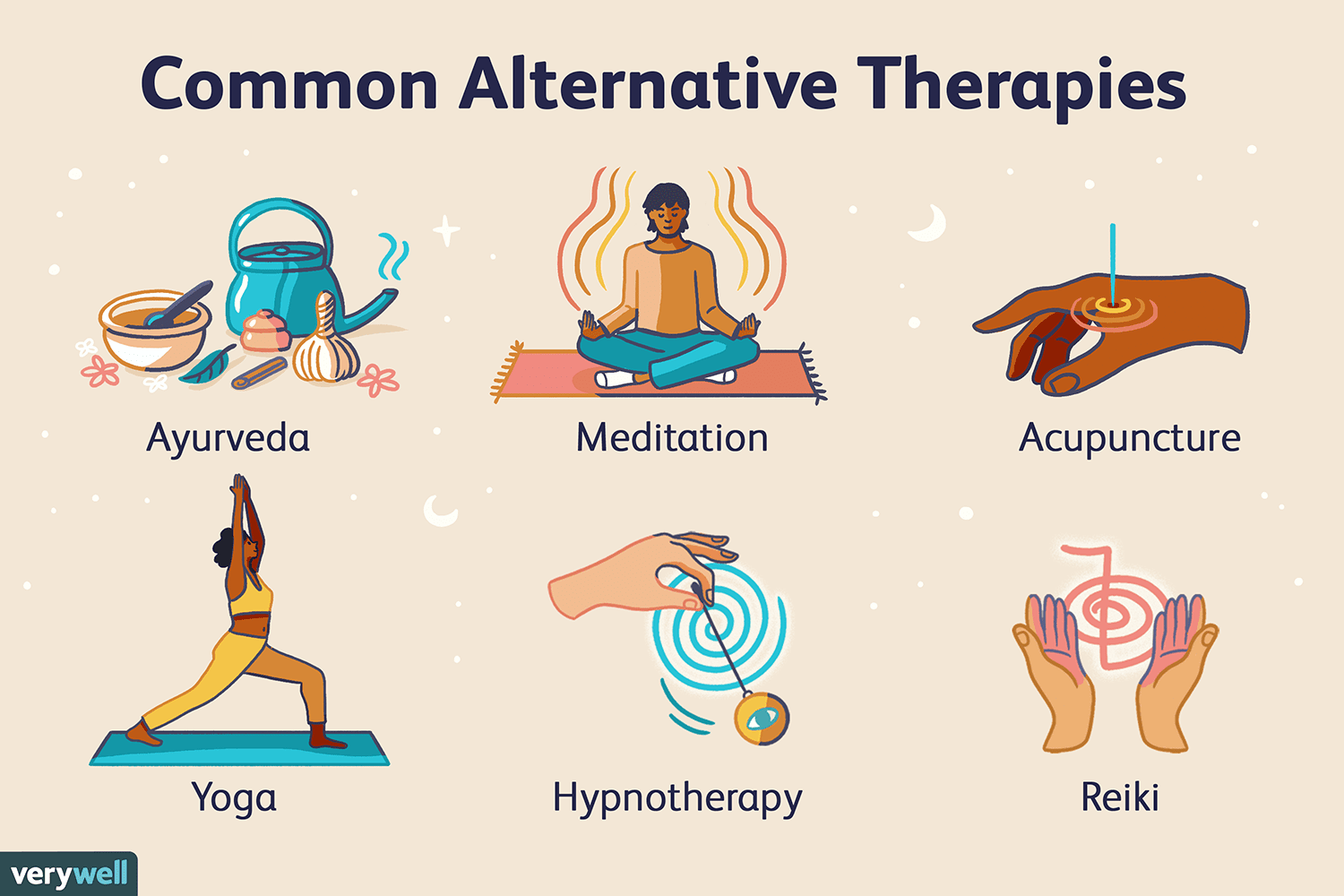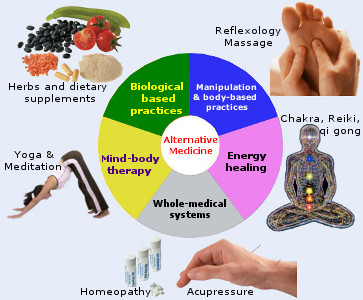Different types of Alternative Therapy
Introduction
As people strive for all-around health care solutions, complementary medicine has gained popularity in the recent past. Many practices and therapies fall under alternative healing which could be a very old system or even recent integrative medical methods that foster recovery and good healthhealth. In this article we take a look at what is involved in alternate healing, some types that are commonly used as well as their advantages and disadvantages.
What is Alternative Healing?
Alternative healing refers to any method of treatment other than those traditionally followed by western cultures. It may include such systems developed from ancient cultures’ traditions or modern healthcare innovations. Such approaches have diverse theories, techniques and philosophies although they put into consideration the whole person; body mind spirit integration should also focus on finding out root causes rather than dealing with symptoms alone.
Most Common Modalities Of Alternative Healing
- Traditional Chinese Medicine (TCM): TCM is a very ancient system of health that has been in practice in China and other parts of Asia for thousands of years. It includes methods such as acupuncture, herbal medicine, massage (Tui Na), cupping therapy, and qigong. Health according to TCM is considered a state of balance between yin and yang forces in the body with emphasis on smooth flow of vital energy (qi) along meridians or channels.
- Ayurveda: Ayurveda is an ancient Indian holistic healing system designed to create harmony within the body, mind and spirit. Some Ayurvedic treatments may involve dietary changes, herbal remedies, massage (Abhyanga), yoga, meditation or detoxification therapies (Panchakarma). According to Ayurveda every individual falls under one of three doshas; Vata, Pitta or Kapha which are determined by their unique constitution.
- Homeopathy: Based on the principle ‘like cures like’, Homeopathy is a medical system where highly diluted substances that cause symptoms similar to what patient suffers from being utilized in order stimulate his/her natural defense mechanism towards self-healing.Homeopathic remedies are believed to address energetic imbalances underlying ill health by matching them with individual symptoms and constitution of each person.
- Naturopathy: Naturopathy is a holistic approach to health and healing that highlights the capacity of the body to heal itself. Naturopathic doctors employ different natural therapies, which involve dieting and lifestyle recommendation, herbal medicine, nutritional supplements, hydrotherapy as well as physical medicine with a view to boosting the inherent curative processes of the organism thereby reinstating homeostasis.
- Energy Healing: Energy healing modalities like Reiki, Healing Touch or Pranic Healing operate through interaction with subtle energy systems of an individual in order to foster recovery and harmony within a person’s life. What they do is utilize mild impacts together with visualization plus intention so as to remove these barriers; stabilize energetic centers(chakras) while at the same time bringing back supply for essential life force(prana/chi) along all body parts.
- Mind-Body Practices: Health is promoted by mind-body practices such as meditation, mindfulness exercises or yoga which help integrate mental awareness with physical actions thus improving overall wellness levels among individuals. Through these activities people are able to concentrate better; become more calm but also relax deeply even during stressful moments since they can control their emotions much easily than before; this way chronic pain will be tamed down considerably because persons shall have developed higher resistance towards such ailments when engaging themselves spiritually into various forms of qigong or tai chi movements.
Benefits and limitations of unconventional treatment methods
Unconventional treatment methods can be helpful for health improvement in the following ways:
– Wide-ranging approach: Holistic therapy deals with the whole being; that is, it focuses on the body, mind and spirit and also seeks to find out what causes a disease rather than just treating its symptoms.
– Individualised attention: Many complementary treatments provide patient-centered care which is designed to meet an individual’s particular requirements, preferences or goals for recovery.
– Encourages self-empowerment plus self-care: These therapies enable people to participate actively in their own well-being through equipping them with skills as well as knowledge on self-healing, self-awareness and taking care of oneself.
– Conventional medicine integration: By blending alternative healing practices with conventional medical interventions patients are afforded an inclusive approach towards illness management as well as fostering recuperation holistically.
Nevertheless, alternative healing methods do have their drawbacks too and may not work effectively in some cases or suit everyone. Some possible downsides include:
– Lack of Scientific Evidence: Despite the fact that numerous complementary therapies have been used for a long time and there are also many stories supporting their efficiency, frequently scientific investigations into how effective they are produce limited or inconclusive outcomes.
– Safety Concerns: Some alternative healing methods can be dangerous or have side effects when not used correctly or in combination with traditional medical treatments; therefore it is necessary to consult professionals before using them especially if one has already got other diseases being treated conventionally.
– Cost and Accessibility: Insurance companies often do not cover the cost of alternative medicine practices which may make them expensive for people with low incomes who cannot afford these services. On top of this, finding qualified practitioners near your area might be difficult because you live in a rural place where there are no such doctors available.
Integrating Alternative Healing with Conventional Medicine
Complementary health care tries to incorporate conventional and non-conventional approaches by looking at all aspects of a person’s life. Professionals working in this field take into account every single detail about patients’ preferences while coming up with strategies aimed at treating different illnesses which ensure that patients get holistic care towards optimal health.
There are some main principles of integrative medicine:
- Patient-Centered Care: The needs, preferences, and values of the individual take priority in this approach to medicine. The patient is encouraged to actively participate in their own journey towards healing by making decisions about their health with information they have received.
- Evidence-Based Practice: Integrative practitioners use treatments backed up by scientific facts from both conventional and alternative systems of medicine; such knowledge should be obtained through researches or gained from practice as well as patient’s feedback.
- Collaborative Approach: Different types of healthcare providers such as doctors, naturopaths, acupuncturists, chiropractors and mind-body therapists work together as members of an integrated team which aims at giving holistic care for patients who need it most.
- Promoting Health and Wellness: Integrative medication is not just about curing disease but also aims at health promotion as well as wellness. It takes into account measures of prevention, changes in lifestyle and self-care practices that foster long term wellbeing.
Conclusion: Diversity of Alternative Healing Approaches
In conclusion, alternative healing includes a wide variety of methods and techniques that provide holistic approaches to health and wellness. Alternative healing modalities are the same in their objective which is to promote balance, recovery and overall well-being despite being derived from traditional systems such as TCM (Traditional Chinese Medicine) or Ayurveda among others throughout ages even until this day where new innovations like energy therapies; mind-body interventions etcetera have been made available.
However these methods cannot replace conventional medical treatments but rather offer useful complementary strategies for enhancing conventional care while empowering individuals towards taking active roles on matters concerning their own health according to conclusions reached by considering different types of alternative healings alongside western medicines so that we create an all-inclusive patient-centered approach that recognizes interconnectedness between body-mind-spirit which is what should be done if one wants to achieve optimum healthcare.


























